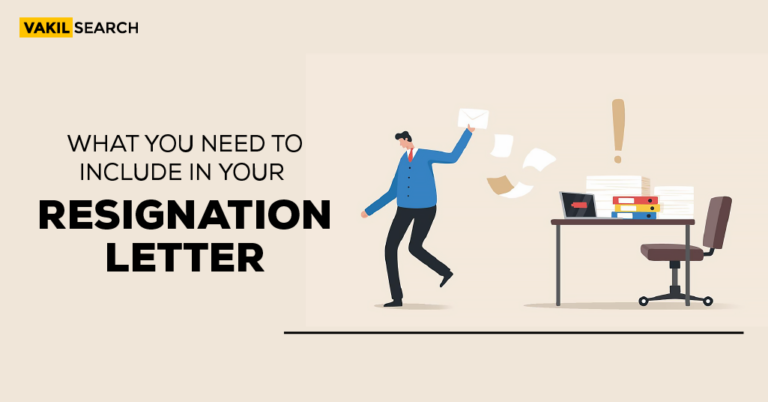For information on how to add a director to a company after incorporation, how to remove a director, and what to do if a director is ineffective, read our guide. Read to know more about top ways to get rid of a director of a company quickly.
Overview:
A firm’s shareholders have the power to vote or remove a director during a general meeting. However, under section 242 of the Act, there is an exception when the Tribunal or the federal government chooses the Director. Let’s look at how to dissolve a private limited company’s Board of directors. Top Ways to Get rid of a Director of a Company Quickly
There are three scenarios in which a company’s Board of directors may be ousted
- The case where the Director resigns personally
- Suo-moto Removal of a Director by the Board The resignation of the Director
- Vacation from Work: The Company’s three consecutive board meetings are missed by the Director.
According to the Act, a director may be dismissed for the following reasons
- If the Director receives one of the disqualifications listed in Section 164
- Sec 167 (1) (b): If a director misses more than a year’s worth of board meetings
- Sec 168: Director’s voluntary resignation
- Sec 167 (1) (e): is ruled ineligible by the Tribunal or court
- If the Director engages in contracts in violation of the terms of Section 184, pursuant to Section 167(1)(c) and (d), is found guilty of the accusations brought against them and given a sentence of at least 6 months in prison.
The Case where the Director Resigns Personally
The worried Director offers the Board his resignation. The actions listed below will be taken in this instance to strike his name from the list of directors:
- In order to organize a Board Meeting, the corporation must provide seven days’ clear notice (defined as 21 days of notice excluding the day the notification was issued and received)
- The Board will deliberate privately before deciding whether or not to accept the resignation when they meet
- Once the Board has approved the Director’s resignation, they will adopt a Board resolution in the following format
- ‘RESOLVED THAT the resignation of Mr. XYZ be accepted and is hereby made effective,’
- ALSO RESOLVED The Board wishes to express its gratitude to the director for the support and advice have given while serving as a directors of the company
- RESOLVED FURTHER THAT all acts, deeds, and things necessary to the removal of the above person from the directorship of the company shall be and are therefore jointly authorised to be done by the directors of the company
- After the resolution has been approved, the departing Director must file Form DIR-11 with the Board Resolution, a copy of the resignation letter, and proof that it has been delivered
- While form DIR – 11 must be filed with the Registrar of Companies with the resignation letter and the board resolution, The Company must submit form DIR – 12 to the Registrar of Companies
- The Director’s name will be deleted from the Company’s master data on the Ministry of Corporate Affairs website following the completion of all paperwork.
Suo Moto Removal of a Director by the Board
Given that the Central Government or the Tribunal did not choose the Director, the Company has the ability to dismiss the Director by passing an Ordinary Resolution.
- All directors will be given seven days’ notice before any board meetings are convened. A special notice informing the directors of the director’s termination will be sent to them
- A resolution to call an extraordinary general meeting will be approved on the day of the board meeting, together with a resolution to remove the Director, subject to shareholder approval
- A general meeting will take place 21 days prior to written notice. During the meeting, the participants will be invited to cast votes on the matter. The resolution will be adopted if the majority agrees with the choice
- The Director will be given a chance to be heard before the resolution is passed
- The forms DIR – 11 and DIR – 12 will be filed along with the same attachments as the Board Resolution and Ordinary Resolution following the resolution’s passage
- The Director’s name will be removed from the Ministry of Corporate Affairs website following the submission of the forms.
If the Director Misses 3 Consecutive Board Meetings
According to section 167 of the 2013 Companies Act, a Director is deemed to have resigned from the position, and a Form DIR-12 is filed on his name, and his name is removed from the Ministry of Corporate Affairs if he misses a board meeting for a period of 12 months, beginning on the day, he missed the first board meeting, even after giving due notice for all meetings.
How can a Director Who is also a Shareholder be Removed? Claims of Unfair Prejudice.
If the Director also owns stock in the Company, there may be further issues.
A shareholder may petition the court under Section 994 of the Companies Act of 2006 on the grounds that the Company’s affairs are being or have been managed in a way that unfairly disadvantages all of its shareholders or a portion of them. This is a contention that is frequently referred to as ‘unfair bias.’ Over the years, the courts have given considerable thought to the issue of what constitutes unfair bias, and the idea has been used in a variety of contexts.
Some of these have involved the removal of a director from a corporation that the court considered to be a ‘quasi-partnership.’
A quasi-partnership is a business that, as its name implies, was designed to be run as a partnership between its owners. It was reasonable for each shareholder to anticipate continuing involvement in business administration. Many owner-managed enterprises might be categorized as quasi-partnerships.
Suppose the court recognizes a company’s status as a quasi-partnership. In that case, it may also rule that any director who has been removed from office and so excluded from the Company’s management has been subjected to unduly discriminatory treatment in their capacity as a shareholder.
The court has broad authority in these situations and could, for instance, order the Director’s reinstatement or, more likely, order that the other shareholders purchase the deposed Director’s shares at market price.
FAQs
Can a Director of a Company Be Terminated?
Directors can be removed from their positions through various legal procedures, but the term termination is not commonly used. Instead, removal or resignation is the standard terminology.
How Do I Remove a Director Without Resignation?
If a director doesn't resign voluntarily, the process of removal involves following legal steps, which may include board resolutions and regulatory compliance.
How Do I Remove a Director from a Private Company?
Removing a director from a private company necessitates adhering to legal provisions, often involving shareholders' approval and regulatory notifications.
Can a 50% Shareholder Remove a Director?
Depending on the company's articles and legal regulations, a 50% shareholder might have the ability to influence director removal, but specific requirements vary.
How Do I Fire a Director from a Private Limited Company?
Terminating a director's position involves following legal procedures, such as passing resolutions, holding meetings, and adhering to company laws.
Can a Director Resign at Any Time?
Directors can generally resign at any time by submitting a resignation letter to the board of directors. However, there might be legal implications and procedural requirements.
Who Has the Power to Remove Directors?
Depending on the company's structure, shareholders, the board, or regulatory authorities may have the authority to remove directors.
What Documents Are Required for Removal of a Director?
Required documents typically include resignation letters, board resolutions, special notices, and relevant regulatory forms.
What Are the Grounds for Removal of Director?
Grounds for removal may include breach of duties, non-compliance, fraud, or situations specified in the Companies Act.
Do You Need a Reason to Remove a Director?
Generally, valid reasons such as misconduct, incapacity, or non-compliance are required for director removal, as per legal provisions.
How Do I Voluntarily Remove a Director?
Voluntary removal involves the director's consent, board resolution, regulatory filings, and adherence to company laws.
Can a Director Be Removed Without Notice?
Directors' removal typically involves a formal notice and compliance with legal procedures, ensuring due process.
What Is the Notice Period for Director Removal?
Notice periods for director removal can vary based on company regulations and the nature of the removal.
Is Director Liable After Resignation?
Directors can still be held liable for actions during their tenure even after resignation, depending on the circumstances and legal provisions.
How Do You Force a Director to Resign?
Forcing a director's resignation involves following proper legal procedures, which might include shareholder actions and compliance with regulations.
Conclusion
The Companies Act of 2006’s statutory procedure is a crucial tool for a firm when dealing with an unfit or dissident director. To ensure that the process is correctly followed and that it avoids the possible hazards mentioned above, any business wishing to employ the approach must make sure that it obtains appropriate legal assistance. One effective way to get rid of a director of a company quickly is through a vote of no confidence by the board of directors.










